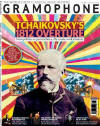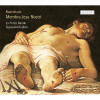Texte paru dans: / Appeared in:
*

GRAMOPHONE (0-8/2012)
Pour s'abonner /
Subscription information
Accent
ACC24243

4015023242432
Reviewer: David Vickers
Kuijken directs Membra Jesu Nostri from his shoulder cello
This is the 16th version of Membra Jesu nostri (1680) to have come my way on CD, which must make Buxtehude’s cycle of seven short cantatas one of the most frequently recorded sacred works of the 17th century. Sigiswald Kuijken continues to be a relentless pioneer of Baroque music practice; in recent years he bas embraced the one-voice-per-part approach to Bach’s church music and has also reappraised several cornerstones of Baroque repertoire using a violuncello da spalla (ie a ‘shoulder’ cello). Both elements are evident in La Petite Bande’s performance of Membra jesu nostri. The sonatas for two violins and basso continuo that commence each cantata are played with an unusual lightness of touch (Kuijken playing the shoulder cello); aria-like passages are accompanied only by Benjamin Alard’s sensitive organ continuo-playing.
The Sonata in tremulo (‘Ad genua’) is played softly and intelligently but the blend and tuning of the choral quintet in ‘Ad ubera portabimini’ is marred by pinched and anaemic singing from Ann-Katrin Schenck (although she sings the ‘Klag-Lied’ in BuxWV76 marvellously). The chorus ‘Quid sunt plagae’ (‘Ad manus’) has poetic solemnity but elsewhere singers tend to be adequate rather than eloquent, and ‘Sicut modo geniti’ (‘Ad pectus’) and other key moments feel perfunctory rather than moving. Other single-voice-per-part versions by The Sixteen, Cactus Cölln, Les Voix Baroques and the Netherlands Bach Society communicate the penitential words with warmer sentimentality.
Cliquez l'un ou l'autre
bouton pour découvrir bien d'autres critiques de CD
Click either button for many other reviews


